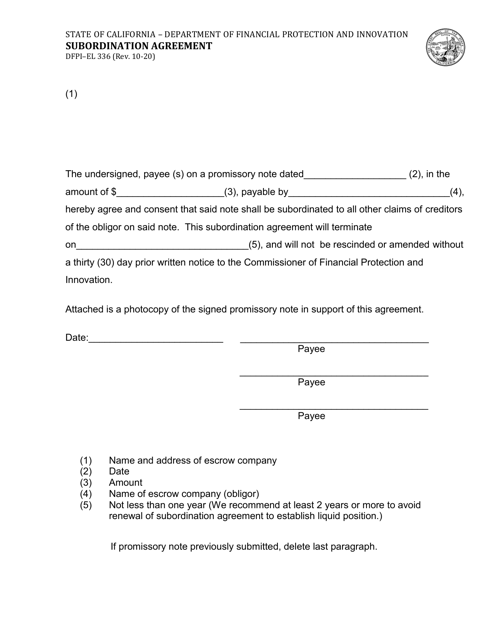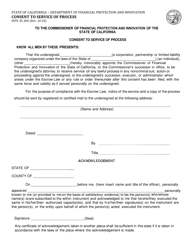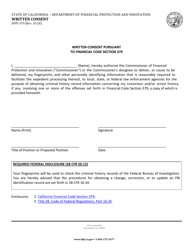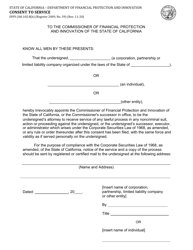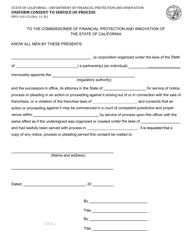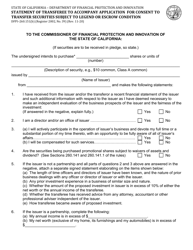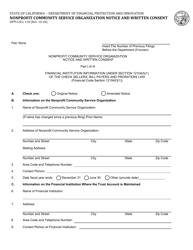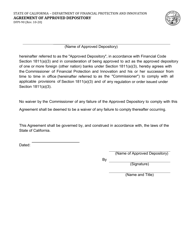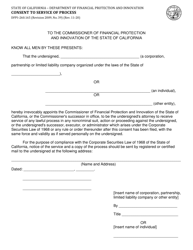Form DFPI-EL336 Subordination Agreement - California
What Is Form DFPI-EL336?
This is a legal form that was released by the California Department of Financial Protection and Innovation - a government authority operating within California. As of today, no separate filing guidelines for the form are provided by the issuing department.
FAQ
Q: What is a Subordination Agreement?
A: A Subordination Agreement is a legal document that establishes the priority of one party's claim over another party's claim in case of default or bankruptcy.
Q: What is the purpose of a Subordination Agreement?
A: The purpose of a Subordination Agreement is to determine the priority of claims in case of default or bankruptcy, ensuring that certain debts take precedence over others.
Q: Who is involved in a Subordination Agreement?
A: A Subordination Agreement typically involves at least two parties: the party with the higher priority claim (the senior creditor) and the party with the lower priority claim (the junior creditor).
Q: Why would someone enter into a Subordination Agreement?
A: Someone may enter into a Subordination Agreement to obtain financing or to facilitate a loan transaction, as it allows for the restructuring of debt and ensures repayment priorities.
Q: What happens if a borrower defaults on a loan covered by a Subordination Agreement?
A: If a borrower defaults on a loan covered by a Subordination Agreement, the senior creditor would have the first right to collect the outstanding debt before the junior creditor can make a claim.
Form Details:
- Released on October 1, 2020;
- The latest edition provided by the California Department of Financial Protection and Innovation;
- Easy to use and ready to print;
- Quick to customize;
- Compatible with most PDF-viewing applications;
- Fill out the form in our online filing application.
Download a fillable version of Form DFPI-EL336 by clicking the link below or browse more documents and templates provided by the California Department of Financial Protection and Innovation.
